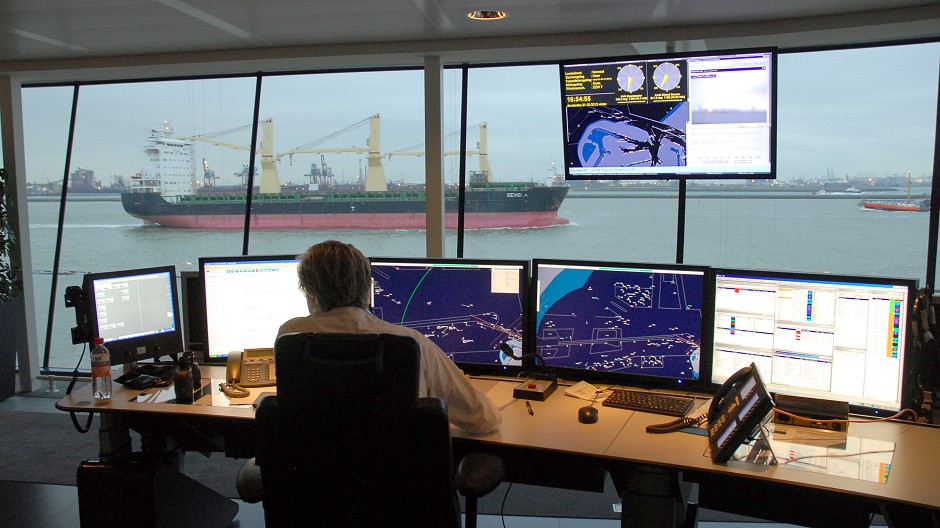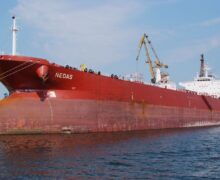
Vessel Traffic Services (VTS): An Anti-Collision Aid – Manjur Khan (19N)
[Capt. Manjur Khan (LinkedIn): Master Mariner (Aus), serving as Marine Pilot-Loading Master for LNG Terminals (Gorgon & Wheatstone). Previously served Offshore Support Vessels operation management, Commonwealth of Australia (AMSA) & State (NSW) Maritime Regulatory Administrations; Liner Shipping operations as Port Captain, and as seagoing officer / master on various ocean going & offshore vessels]
Introduction
Vessel Traffic Services (VTS), an anti-collision aid, contribute to safety of life at sea. Mariners around the globe use VTS at sea every day, in port and harbour waters enhancing safety of life, on water navigation, protection of the marine environment and properties. It is important for mariners at sea to understand some of the concepts, structure and regulatory frameworks around establishing, implementing and operating the vessel traffic services, in addition to daily use. This article aims to highlight and raise awareness on some of the very fundamental concepts and regulatory frameworks around a VTS used by mariners at sea.
The Concept
International conventions require participating Governments to establish VTS where the volume of traffic or the degrees of risk justify the service. The International Maritime Organisation (IMO) identifies two authorities which between them are responsible for the determination, establishment and operation of VTS, namely the Competent Authority and the VTS Authority.
Signatory State(s) to the SOLAS 1974 Convention have an obligation to discharge its responsibilities under the Convention. For example, Australian Maritime Safety Authority (AMSA) is the Commonwealth maritime entity which represents Australia at the international level and gives effect to international conventions under Commonwealth legislation. Likewise UK, USA, Canada, New Zealand administrations to name a few.
International regulations and conventions
Vessel Traffic Services (VTS) enhances safety of life at sea, safety and efficiency of navigation and protection of the marine environment, adjacent shore areas, work sites and offshore installations from possible adverse effects of maritime traffic.
The International Convention for Safety of Life at Sea (SOLAS), 1974, Chapter V, Regulation 12 requires that “contracting Governments undertake to arrange for the establishment of VTS where, in their opinion, the volume of traffic or the degrees of risk justifies such a service”.
The International Maritime Organisation (IMO) Assembly Resolution A.857(20) identifies two authorities, which between them are responsible for the determination, establishment and operation of VTS, namely the Competent Authority (CA) and the VTS Authority (VTSA). The IMO defines the CA as the authority made responsible, in whole or in part, by the government for the safety and efficiency of vessel traffic and the protection of the environment. The VTSA is defined as the authority with responsibility for the management, operation and co-ordination of the VTS, interaction with participating vessels and the safe and effective provision of the service.
International guidelines and criteria for VTS
IMO and the International Association of Marine Aids to Navigation and Lighthouse Authority (IALA) provide guidelines for establishment of VTS as a risk mitigation tool within the territorial waters. Relevant State and Port Authorities determine the level of VTS to be implemented on determination of operational risks within their ports and territorial waters.
Relevant authorities in planning and implementing VTS shall, wherever possible, follow the guidelines developed by the IMO and IALA. The use of VTS may only be made mandatory in sea areas within the territorial seas of a coastal State; and shall endeavour to secure the participation in, and compliance with, the provisions of vessel traffic services by ships entitled to fly their flag.

Responsibilities, liabilities and level of services
In accordance with IMO resolution A.857(20) and IALA guidelines, the responsibilities, liabilities involved and level of service provided in VTS environment are taken as the criteria for identifying solutions. In accordance with IMO Resolution A.857(20) and IALA guidelines and in planning and establishing a VTS, the relevant administration or the CA should:
- ensure that a legal basis for the operation of a VTS is provided for and that the VTS is operated in accordance with national and international law;
- ensure that objectives for the VTS are set;
- ensure that a VTS authority is appointed and legally empowered;
- ensure that the service area is delineated and declared a VTS area; where appropriate, this area may be subdivided in sub-areas or sectors;
- determine the type and level of services to be provided, having regard to the objectives of the VTS;
- establish appropriate standards for shore- and offshore-based equipment;
- ensure that the VTS authority is provided with the equipment and facilities necessary to effectively accomplish the objectives of the VTS;
- ensure that the VTS authority is provided with sufficient staff, appropriately qualified, suitably trained and capable of performing the tasks required, taking into consideration, the type and level of services to be provided and the current IMO Guidelines on the recruitment, qualifications and training of VTS operators;
- establish appropriate qualifications and training requirements for VTS operators, taking into consideration the type and level of services to be provided;
- ensure that provisions for the training of VTS operators are available;
- instruct the VTS authority to operate the VTS in accordance with relevant IMO resolutions;
- establish a policy with respect to violations of VTS regulatory requirements, and ensure that this policy is consistent with national law. This policy should consider the consequences of technical failures, and due consideration should be given to extraordinary circumstances that result.
In operating a VTS, the VTSA should
- ensure that the objectives of the VTS above are met;
- ensure that the standards set by the CA for levels of services and operator’s qualifications and equipment are met;
- ensure that the VTS is operated in conformity with relevant IMO resolutions;
- ensure that the VTS operations are harmonized with, where appropriate, ship reporting and routeing measures, aids to navigation, pilotage and port operations;
- consider, where appropriate, the participation of the pilot both as a user and provider of information;
- ensure that a continuous listening watch on the designated radio frequencies is kept and that all published services are available during the operational hours of the VTS;
- ensure that operating procedures for routine and emergency situations are established;
- in a timely manner, provide mariners with full details of the requirements to be met and the procedures to be followed in the VTS area. This information should include the categories of vessels required or expected to participate; radio frequencies to be used for reporting; areas of applicability; the times and geographical positions for submitting reports; the format and content of the required reports; the VTS authority responsible for the operation of the service; any information, advice or instructions to be provided to participating ships; and the types and level of services available.
The guidance on the services rendered by a VTS should be taken into account
The information service (IS) is provided by broadcasting information at fixed times and intervals or when deemed necessary by the VTS or at the request of a vessel, and may include for example reports on the position, identity and intentions of other traffic; waterway conditions; weather; hazards; or any other factors that may influence the vessel’s transit.
The navigational assistance (NS) service is especially important in difficult navigational or meteorological circumstances or in case of defects or deficiencies. This service is normally rendered at the request of a vessel or by the VTS when deemed necessary.
The traffic organization service (TOS) concerns the operational management of traffic and the forward planning of vessel movements to prevent congestion and dangerous situations, and is particularly relevant in times of high traffic density or when the movement of special transports may affect the flow of other traffic.

Conclusion
VTS is widely used by international and national jurisdictions as an effective risk mitigating tool. International recommendations and guidelines are provided for implementing and mandating VTS in the coastal waters of any State. Countries with similar jurisdictional frame works such as Australia, UK, USA, Canada and New Zealand have adopted the single national Competent Authority concept for simplicity and in accordance with the international standards. The international recommendations and guidelines are found to be suitable for adopting. Mariners at sea must hold utmost regard, comply with the services and directions provided by an appropriate level of VTS provider to ensure safety of life, vessel navigation, protection of the marine environment and coastal infrastructures.
References
o Australian Maritime Safety Authority Act 1990: http://www.amsa.gov.au/About_AMSA/Legislation.asp
o AMSA Marine Orders: http://www.amsa.gov.au/Shipping_Safety/marine_orders/index.asp
o IMO/MSC/Circular 952, viewed in November 2009: http://www.maritime-vts.co.uk/legislation.html;
o International Maritime Organisation (IMO) Resolution A.857 (20), http://www.maritime-vts.co.uk/legislation.html;
o The International Association of Marine Aids to Navigation and Lighthouse Authority (IALA) for VTS guidelines: http://www.maritime-vts.co.uk/legislation.html;
o The International Convention for Safety of Life at Sea (SOLAS), Regulation V/12; http://www.maritime-vts.co.uk/legislation.html;







![[নোঙর 2016] আমার সেরা বিদেশ ভ্রমন : নাফিসা মাশহুরা ইরা](http://bdmariners.org/wp-content/uploads/2016/06/Dubai-city-tour-70x70.jpg)




Recent Comments